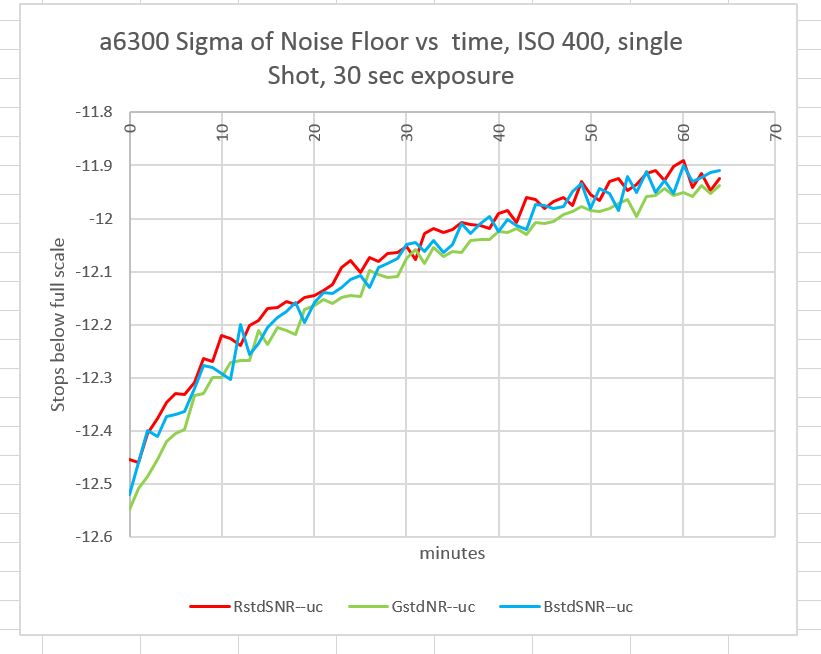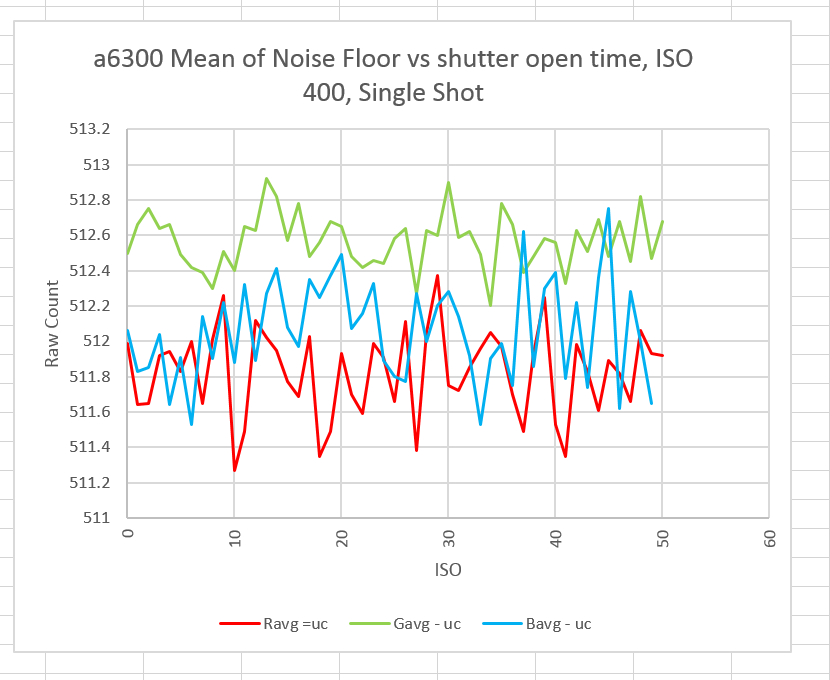This is part of a long series of posts about the Sony a6300. The series starts here.
The Sony a7RII and the a7II both have some self-heating issues when asked to make successive long exposures. The suspicion at the time was that the IBIS systems in both cameras provided some degree of thermal isolation and allowed the sensor to heat up more than in previous generations. Was that it, or are the never Sony senors more susceptible to heat or generate more heat than the previous ones?
I set an a6300 to single shot mode, with ISO at 400 and the shutter speed set to 30 seconds, with LENR off. I installed the body cap. I used an intervalometer to trigger the shutter, and set the interval to one minute, and let the thing run for more than an hour., then looked at the standard deviation of the noise in a central 200×200 pixel square.
Here’s what I saw:
Over the one-hour period, the noise rose by about six-tenths of a stop. This is about what we saw in the a7II, and less than for the a7RII.
There is no significant color shift:


Leave a Reply